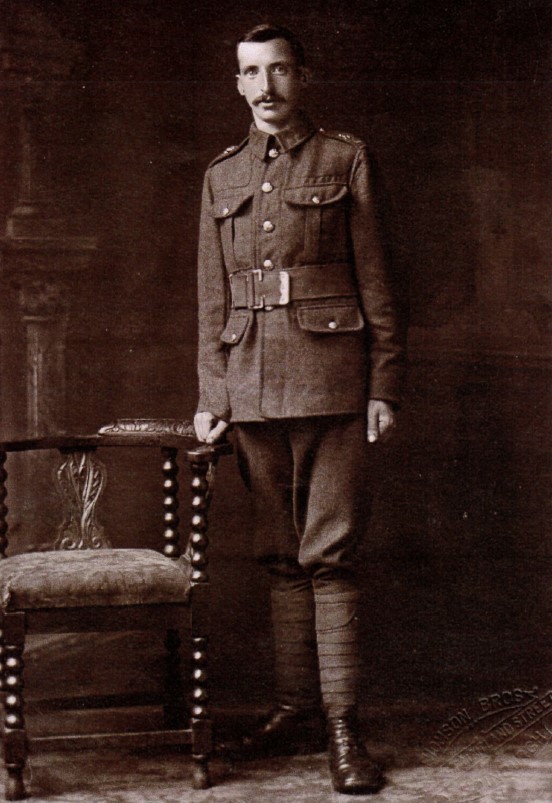Pte
James Barclay
Information about birth
|
Date of birth: 28/12/1885 |
|
Place of birth: Edinburgh, Midlothian, Scotland, United Kingdom |
General information
|
Last known residence: 7 Caledonian Crescent, Edinburgh, Midlothian, Scotland, United Kingdom |
|
Profession: House Painter/ Paperhanger |
Army information
|
Country: Scotland, United Kingdom |
|
Force: British Expeditionary Force |
|
Rank: Private |
|
Service number: 30493 |
|
Units: — Highland Light Infantry, 18th Bn. (Last known unit) |
Information about death
|
Date of death: 07/11/1917 |
|
Place of death: No. 2 Australian General Hospital, Wimereux, Pas-de-Calais, France |
|
Cause of death: Died of wounds (D.O.W.) |
|
Age: 31 |
Cemetery
|
Wimereux Communal Cemetery Plot: VI Row: F Grave: 11 |
Distinctions and medals 2
|
British War Medal Medal |
|
Victory Medal Medal |
Points of interest 4
| #1 | Place of birth | ||
| #2 | Last known residence | ||
| #3 | Place of wounding | ||
| #4 | Place of death (approximate) |
My story
James Barclay was born in Edinburgh, Scotland, late 1885. He worked as a housepainter and was married to Ann. They had five children and lived at 7 Caledonian Crescent in Edinburgh.
James was drafted in the army and was taken on by the 18th Battalion Highland Light Infantry. Mid-October 1917 James’ Battalion moved into the frontline in front of the Houthulst Forrest. The conditions were fearful. The weather was wet and cold. The terrain was muddy and honeycombed with waterlogged shell-holes. There was no trench and a line had to be organised by connecting shell-holes. The Battalion wasn’t sorry at all to leave that grim field a couple of days later.
On the 24th of October 1917, after a few days of rest, the 18th Higland Light Infantry relieved the 15th Cheshires in the frontline between Renard Farm and Colombo House. The German artillery was very active during the relief. During the next few days the German artillery kept targeting the positions of the battalion, while German aeroplanes were very active in the area. On the 26th Canadian troops launched an attack on the Passchendaele heights. The German artillery retaliated by keeping up the barrages.
James was hit in the leg on 26 October 1917. He was evacuated to No. 2 Australian General Hospital in Wimereux, France. James’ badly wounded leg was amputated, but it was to no avail. On 7 November 1917 his leg again haemorrhaged and James passed away on the operation table. Sister Ethel Gray of the 2nd Australian General Hospital, who witnessed the operation, wrote a letter to James’ wife Ann. She stated that James’ sister had been able to visit him in the hospital. His brother arrived on the morning op his passing. James was buried that same day in the Wimereux Communal Cemetery. His funeral was attended by his sister and brother.
James was drafted in the army and was taken on by the 18th Battalion Highland Light Infantry. Mid-October 1917 James’ Battalion moved into the frontline in front of the Houthulst Forrest. The conditions were fearful. The weather was wet and cold. The terrain was muddy and honeycombed with waterlogged shell-holes. There was no trench and a line had to be organised by connecting shell-holes. The Battalion wasn’t sorry at all to leave that grim field a couple of days later.
On the 24th of October 1917, after a few days of rest, the 18th Higland Light Infantry relieved the 15th Cheshires in the frontline between Renard Farm and Colombo House. The German artillery was very active during the relief. During the next few days the German artillery kept targeting the positions of the battalion, while German aeroplanes were very active in the area. On the 26th Canadian troops launched an attack on the Passchendaele heights. The German artillery retaliated by keeping up the barrages.
James was hit in the leg on 26 October 1917. He was evacuated to No. 2 Australian General Hospital in Wimereux, France. James’ badly wounded leg was amputated, but it was to no avail. On 7 November 1917 his leg again haemorrhaged and James passed away on the operation table. Sister Ethel Gray of the 2nd Australian General Hospital, who witnessed the operation, wrote a letter to James’ wife Ann. She stated that James’ sister had been able to visit him in the hospital. His brother arrived on the morning op his passing. James was buried that same day in the Wimereux Communal Cemetery. His funeral was attended by his sister and brother.
Sources 4
|
18 Battalion Highland Light Infantry (The National Archives, Kew (TNA), WO 95/2490/2_2). https://discovery.nationalarchives.gov.uk/details/r/C14303 Sources used |
|
1901 Scotland Census (National Records of Scotland, Edinburgh (NRS), Reels 1-446). https://www.nrscotland.gov.uk/ Sources used |
|
Ethel Gray aan Ann Barclay, 07.11.1917, (Onuitgegeven niet genummerde bundel brieven 1919). Sources used |
|
War Office: Soldiers’ Documents from Pension Claims, First World War (The National Archives, Kew (TNA), WO 364). https://www.nationalarchives.gov.uk/ Sources used |
More information 3
|
Commonwealth War Graves Commission Database https://www.cwgc.org/find-records/find-war-dead/casualty-details/507610 |
|
Namenlijst (In Flanders Fields Museum) https://namenlijst.org/publicsearch/#/person/_id=96d7e37e-3909-47e2-bae3-2195cde5bcd0 |
|
Lives of the First World War (Imperial War Museum) https://livesofthefirstworldwar.iwm.org.uk/lifestory/176649 |
